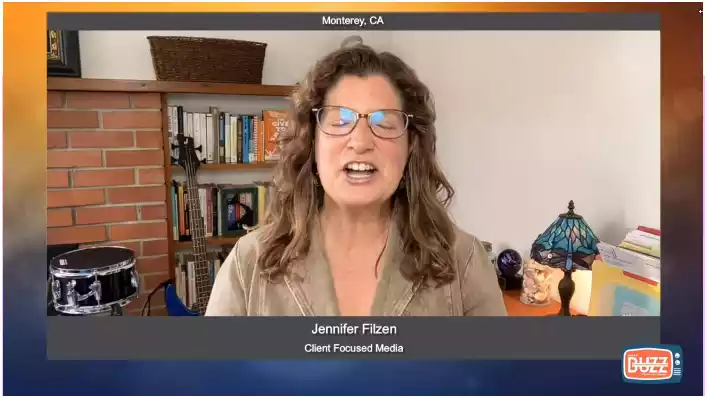Navigating the Challenges: Providers vs Payers in Prior Authorization Process
Uncover the dynamics of providers vs payers in prior authorization, and how this ongoing battle shapes patient care and healthcare efficiency.

If you’re wondering how to get prior authorization for medication, the process typically starts with your healthcare provider. They will submit a prior authorization request to your insurance company, including details about your medical condition and why the prescribed medication is necessary. Your provider may need to include supporting documents like medical records or test results. Once submitted, the insurance company reviews the request and makes a decision. It’s important to follow up with your provider and the insurance company to ensure the process moves smoothly and to address any potential delays.
Let’s examine the facts!
Table of Contents
Providers vs Payers in Prior Authorization Process

The prior authorization (PA) process has long been a cornerstone of the healthcare system, designed to ensure that patient treatments are necessary and cost-effective. However, this process has also become a significant source of friction between healthcare providers and payers. The complexities and inefficiencies inherent in the PA process can lead to delays in patient care, increased administrative burdens, and significant costs for both parties involved. This article explores the challenges providers and payers face in navigating the prior authorization process and highlights potential solutions to streamline and improve this critical component of healthcare delivery.
The Role of Prior Authorization
Prior authorization is a utilization management process used by insurance providers to assess the suitability and necessity of certain medications, tests, and procedures before they are provided to a patient. The primary goal of PA is to ensure that treatments are medically necessary and to prevent the overuse or misuse of high-cost services. While the intentions behind prior authorization are rooted in controlling healthcare costs and maintaining quality of care, implementing this process often creates significant hurdles for healthcare providers and payers alike.
Challenges Faced by Healthcare Providers
Administrative Burden
One of the most cited challenges by healthcare providers is the heavy administrative burden associated with the PA process. Physicians and their staff are responsible for submitting detailed documentation to justify the necessity of the requested service. This often involves multiple phone calls, faxing of medical records, and filling out specific forms required by each insurance company. A study by the American Medical Association found that physician practices spend an average of 14.6 hours per week on prior authorization tasks, which translates to nearly two full workdays. This administrative load diverts valuable time and resources from direct patient care, contributing to physician burnout and dissatisfaction.
Delays in Patient Care
The PA process can result in significant delays in patient care. Once a prior authorization request is submitted, providers must wait for approval from the insurance company before proceeding with the prescribed treatment. This waiting period can sometimes vary from hours to several days or weeks. For patients with urgent medical needs, these delays can cause their illness to worsen and, in extreme cases, have adverse health effects. According to an American Medical Association survey, 28% of physicians reported that PA had led to a severe adverse event for a patient, such as hospitalization or a life-threatening event.
Lack of Transparency and Consistency
Healthcare providers also need more transparency and consistency in the PA process. Each payer has rules and criteria for approving prior authorization requests, which can vary significantly between insurance plans. This inconsistency makes it difficult for providers to anticipate what will be required for PA approval, leading to frustration and inefficiency. Furthermore, providers often need more clarity regarding the reasons for PA rejections, making it challenging to address and resolve issues promptly.
Challenges Faced by Payers
Ensuring Appropriate Care
Payers are responsible for managing healthcare costs while ensuring patients receive appropriate care. The primary objective of prior authorization for payers is to prevent unnecessary medical expenses by verifying the necessity of specific treatments and services. However, balancing cost control with quality care is a complex task. Payers must rely on comprehensive clinical guidelines and evidence-based criteria to make informed PA decisions. This requires a robust infrastructure and well-trained staff to review and process PA requests efficiently.
Balancing Efficiency and Thoroughness
Payers face the challenge of balancing the efficiency of the PA process with the thoroughness required for accurate decision-making. On one hand, there is pressure to expedite PA approvals to minimize delays in patient care. On the other hand, a thorough review of each PA request is essential to ensure that treatments meet medical necessity criteria and align with the payer’s policies. To streamline the process, some payers have implemented automated PA systems that use algorithms to flag requests for further review. While automation can improve efficiency, it may lead to oversights if not carefully monitored and managed.
Managing Provider Relationships

Potential Solutions for Improvement
Given the numerous challenges associated with the prior authorization process, stakeholders across the healthcare industry have been exploring potential solutions to enhance and streamline PA procedures. Several key strategies have emerged as promising approaches to address the issues providers and payers face.
Standardization of PA Requirements
One potential solution is the standardization of prior authorization requirements across payers. By developing and adopting uniform criteria and guidelines for standard medical services, healthcare providers would be better equipped to navigate the PA process with greater predictability and efficiency. Several industry organizations, such as the Centers for Medicare & Medicaid Services (CMS) and the American Medical Association (AMA), have advocated for establishing standardized PA protocols to reduce variability and administrative burden.
Implementation of Electronic Prior Authorization (ePA)
Adopting electronic prior authorization (ePA) systems presents another promising avenue for streamlining the PA process. EPA systems leverage technology to automate and expedite PA request submission, review, and approval. These systems enable seamless integration with electronic health records (EHRs), allowing providers to submit PA requests directly from their clinical workflows. Additionally, EPA platforms can provide real-time updates on the status of PA requests, reducing uncertainty and improving transparency. Industry initiatives, such as the National Council for Prescription Drug Programs (NCPDP) SCRIPT Standard for ePA, have been crucial in encouraging the broad use of ePA solutions.
I'm very thankful for Portiva who I know is looking after my practice while I'm gone the virtual assistants can manage prescription refills, documents they can triage patients and just kind of answer administrative questions and they can handle a lot on their own. But also, they're very good about contacting me if there's any emergency or anything I need to attend to. So I'm very thankful for Portiva they can help almost any provider almost anywhere and it really allows for some good work-life balance as I'm getting to experience right now at my family farm so I'm very thankful for Portiva and I'm very happy to use their services"

Board Certified Family Medicine Physician

Portiva's Virtual Medical Assistant - I have all the support I need. There's somebody checking my email, any patient messages. Patients are still able to schedule and handle any scheduling issues and any kind of billing that needs to still go through. Portiva hands handles it all for me. I have support i have somebody that I can access 24/7 pretty much. It's all very seamless. If somebody has an emergency or needs a medication called in. I know that the va's at portiva will handle that for me.

Board Certified Family Medicine Physician

Enhanced Communication and Collaboration

Data-Driven Decision Making
Leveraging data analytics and advanced clinical decision support tools can enhance the PA process by providing valuable insights into trends, patterns, and best practices. Payers can use data to identify areas of improvement in their PA criteria, streamline workflows, and identify opportunities for reducing unnecessary administrative burdens. Providers, in turn, can utilize data to better understand PA requirements and optimize their submission processes. By embracing data-driven approaches, providers and payers can make more informed decisions that benefit patient care.
Legislative and Regulatory Advocacy
Advocacy for legislative and regulatory changes is another important avenue for addressing PA challenges. Healthcare industry stakeholders, including professional associations and patient advocacy groups, can collaborate to influence policy changes that promote more efficient and patient-centered PA processes. Recent legislative efforts, such as the introduction of the “Improving Seniors’ Timely Access to Care Act,” aim to improve the PA process for Medicare Advantage plans by mandating the use of EPA and requiring increased transparency and accountability from payers.
Conclusion
In conclusion, addressing the challenges of prior authorization requires a multifaceted approach encompassing standardization, technological integration, improved communication, data-driven decision-making, and patient-centric strategies. By collaborating effectively, stakeholders can create a more streamlined PA process that reduces administrative burdens for providers and payers and prioritizes timely and quality healthcare delivery to patients. Legislative advocacy further supports these efforts, fostering an environment encouraging innovation and accountability in the PA arena. A concerted focus on these critical areas will ultimately benefit all parties involved and enhance patient care outcomes, leading to a more efficient and effective healthcare system.
To learn more about authorization process that can enhance your medical practice. Discover more about Portiva and unlock a world of possibilities by visiting our homepage today!
- Mastering prior authorization
- Comprehensive prior authorization training
- Optimize prior authorization journey
- Providers and payers in prior authorization
- Operational excellence in prior authorization
- Demystifying prior authorization
- Complex world of prior authorization
- Mastering the prior authorization
- Prior authorization unveiled
- Practices for streamlining prior authorization
- Roadmap to understanding prior authorization
- Advocating patient safety with precertification services
- Outsourcing for prior authorization success
- Patient access and prior authorization
- Prior authorization costs impact healthcare access
- Making prior authorization more efficient
- Fair prior authorization practices
- Engaging patients in prior authorization
- Streamlining prior authorization procedures

